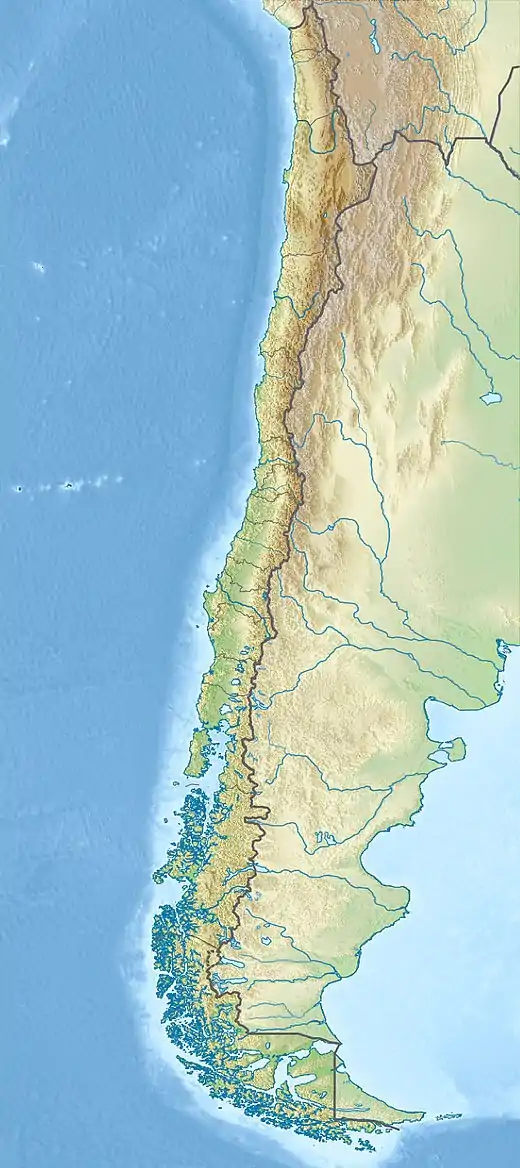| Alternative names | WHAM |
|---|---|
| Part of | Cerro Tololo Inter-American Observatory |
| Location(s) | Coquimbo Region, Chile |
| Coordinates | 30°10′05″S 70°48′12″W / 30.1681°S 70.8033°W |
| Organization | University of Wisconsin–Madison |
| Telescope style | astronomical survey optical telescope |
| Diameter | 0.6 m (2 ft 0 in) |
 Location of Wisconsin H-Alpha Mapper | |
The Wisconsin H-Alpha Mapper (WHAM) is a custom-built 0.6 metres (24 in) telescope operated by the University of Wisconsin–Madison, used to study the Hydrogen-alpha ions of the warm ionized medium. It is a tenant telescope at the Cerro Tololo Inter-American Observatory (CTIO), in the Coquimbo Region of northern Chile.
History
First interest in the ionised hydrogen of the interstellar medium came when Ron Reynolds pointed a spectrometer through a makeshift observing portal in an office of the University of Wisconsin-Madison's Physical Sciences Laboratory during the late 1970s. Reynolds and colleagues, including Matt Haffner, a senior scientist in UW-M's astronomy department, later developed WHAM.[1]
WHAM formally began life at Kitt Peak National Observatory (KPNO) in November 1996, using the flat mirrors of a two axis, all-sky siderostat passing light horizontally through a 0.6 m diameter, 8.6 m focal length objective lens into a 2.5 m x 2.5 m x 6 m trailer that contained the spectrometer, that used a low noise, high efficiency CCD camera as a multichannel detector behind a pair of 15 centimetres (5.9 in) diameter Fabry-Perot etalons/spectrometers.[2] The system was automated, so that the entire WHAM facility, including opening and closing at the beginning and end of the observing night, was operated from a campus office at the University of Wisconsin in Madison. It operated there from 1996 to 2008.
In 2009, WHAM was moved from KPNO to CTIO.[1]
WHAM's field of view allows a whole sky survey in about 2 years. WHAM mapped the details of the Reynolds Layer.
See also
References
- 1 2 WHAM Brings Milky Way's Ionized Hydrogen into Focus, SpaceDaily.com, 2017-04-12
- ↑ The Wisconsin H-Alpha Mapper, R.J. Reynolds et al, Australian Astronomical Society, V15 N1, accessed 13 April 2017
External links
- Official website
- WHAM publications
- The Wisconsin H-Alpha Mapper Northern Sky Survey (2003 report)
- Early Results from the Wisconsin H-Alpha Mapper Southern Sky Survey (2010 report)
- People
- Matt Haffner - Senior Scientist
- Ron Reynolds - Emeritus